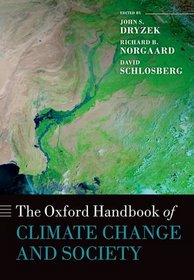What were the first organisms to have sex? We may never know the answer, but as Bill Nye explains in this Big Think interview, scientists are very interested in why sexual activity remains so popular in nature beyond the obvious reproductive implications. The Science Guy delves deeper into this topic in his latest book, Undeniable: Evolution and the Science of Creation
Bill Nye: Sex fascinates me, I will say. As a scientist or a scientific investigator — as a science educator it fascinates me, but as a guy it fascinates me.
No one’s exactly sure what the first organisms were that had sex. But there’s very reasonable theories about it and very reasonable theories about why it persists, why it’s so popular in nature. So you can observe bacteria exchanging DNA through these little pipes, these pili. And they exchange DNA and they carry on and you can imagine one of them exchanging big pieces of DNA slowly and another one exchanging small pieces of DNA quickly. And so they would then — it is reasonable that two different versions of the same strand of DNA, the same genes came to be. One would become the egg and the other would become the seed or the sperm. And it’s not hard to imagine after you observe these things under a microscope, exchanging DNA. But then why would it persist? Why wouldn’t other bacterial species, let’s say in the case of bacteria, why wouldn’t other bacteria outcompete the slow exchange, fast exchange versions just by budding off in the traditional, "split yourself in half" type of binary bacterial reproduction.
Well apparently your biggest enemy is not lions and tigers and bears, which, of course, can be trouble — don’t get me wrong. Your biggest enemy is germs and parasites. So apparently by having sex, organisms are able to come up with a new mixture of genes, a new combination of genes, a new strand of DNA that the germs and parasites are not able to disable as readily, are not able to hijack as easily. So this is such an important thing and such a valuable innovation that, well you just think of all the love songs that are written every five minutes, but just look at dandelions and the lilies of the field. I might add — I mentioned this in the book — I think the guys who wrote the Bible just kind of missed that. The lilies in the field go to a lot of trouble to make flowers. It’s a lot of work and they don’t spin; they don’t toil, but actually they’re working pretty hard. And they do that to get a new mix of genes because plants have viruses and parasites as much as the next organism. So it’s really quite an insight. And the guy who coined this theory is just fabulous. The theory of the Red Queen. And so Alice in Wonderland is now in Through the Looking Glass in the next book and she meets the Red Queen. And the Red Queen is some sort of chess piece person and she’s able to — or she does slide around on the chessboard of life somehow.
And when you’re talking with her you have to run so Alice says to the Red Queen, you know,
"Where I come from if you run all day, you end up somewhere else." And the Red Queen says, "Well that seems like a very [with a British accent I presume], it seems like a very slow sort of country." And that’s what evolution is like. If you’re not running all the time, you fall off the treadmill of life and your genes disappear. So it’s quite an insight — it’s just a cool expression, the theory of the Red Queen. And it’s an aspect of evolution that Darwin speculated about, but it wasn’t really figured out until a century later. So it’s really something.



